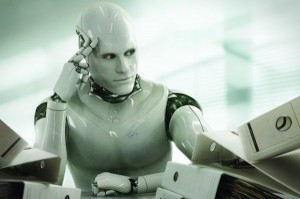[Infographic] How Are Robots Improving Business?
Modern robots are far more capable than their early predecessors. They’ve moved beyond the production line, transcending factories to see widespread use in restaurants, hotels, offices, retail outlets and other workspaces. Today’s technology has a wide range of applications we’ve only begun to explore.
Small businesses and large corporations alike have integrated robotics to incredible effect, achieving higher levels of efficiency while reducing labor costs by an enormous margin. And it’s safe to speculate more companies will transition toward an automated workforce as the price of technology continues to fall.
So what benefits can these companies expect? How are robots improving business, and what do these robots look like? In this article, we’ll explore the subject in greater detail, examining the influence of robotics on commerce and the implications of automation for the future of the country.
Foodservice Robots Supplement Staff.
Many members of today’s workforce — especially those within the foodservice industry — are fearful of automation and the potential of robots to replace them. While this is rational to some extent, robotics often supplement existing staff without substituting them. These changes are small but effective.
To provide just one example, Miso Robotics created a robot capable of flipping hamburgers. Employed in Dodger Stadium in Los Angeles, it helps the service staff meet the demands of thousands of hungry sports fans. “Flippy” hasn’t replaced anyone, but has proven incredibly useful in a supporting role.
Pneumatic Arms Increase Productivity.
The pneumatic robot arm’s function in modern manufacturing is critical to acknowledge. Of all the developments and innovations in the field of robotics, pneumatic arms are one of the most enduring, a testament to technology’s potential to improve productivity. So how do these pneumatic arms work?
As illustrated in the infographic above, pneumatic arms are excellent for completing repetitive tasks and those deemed too dangerous for employees. A factory outfitted with this equipment can ensure management meets their production goals, reducing risk, and by extension, expensive downtime.
Drones Enhance Data Collection & Analysis.
Drones are one of the more common types of robot in service today, providing data collection and analysis in a diverse range of industries. Their functionality is impressive, and professionals use them to monitor construction, inspect crops, view traffic and enhance security. It’s easy to understand why investment has grown.
As drone technology continues to expand in its capacity for navigation and analysis, it’ll change the nature of business. Best of all, these robots are comparatively inexpensive beside other equipment on the market, making them accessible to entrepreneurs and startup companies. Data collection is no longer so costly.
The Future of Robotics.
Modern robots are far more capable than their early predecessors, and far in the future, today’s technology will seem outdated. It’s exciting to speculate on tomorrow’s innovations, and what we’ll see moving into 2019 and beyond. The field of robotics is promising, and its potential is impossible to overstate.
Looking ahead, automation will likely play a large role in commerce. It’ll help to supplement and strengthen the capabilities of a company, increase their productivity and improve data collection and analysis. In short, it’s an ultimately positive transition, and though there are detractors, it’s best to remain optimistic.
The country is moving in a positive direction, and robotics is paving the way.
from Young Upstarts http://bit.ly/2BaVWX4



Comments
Post a Comment